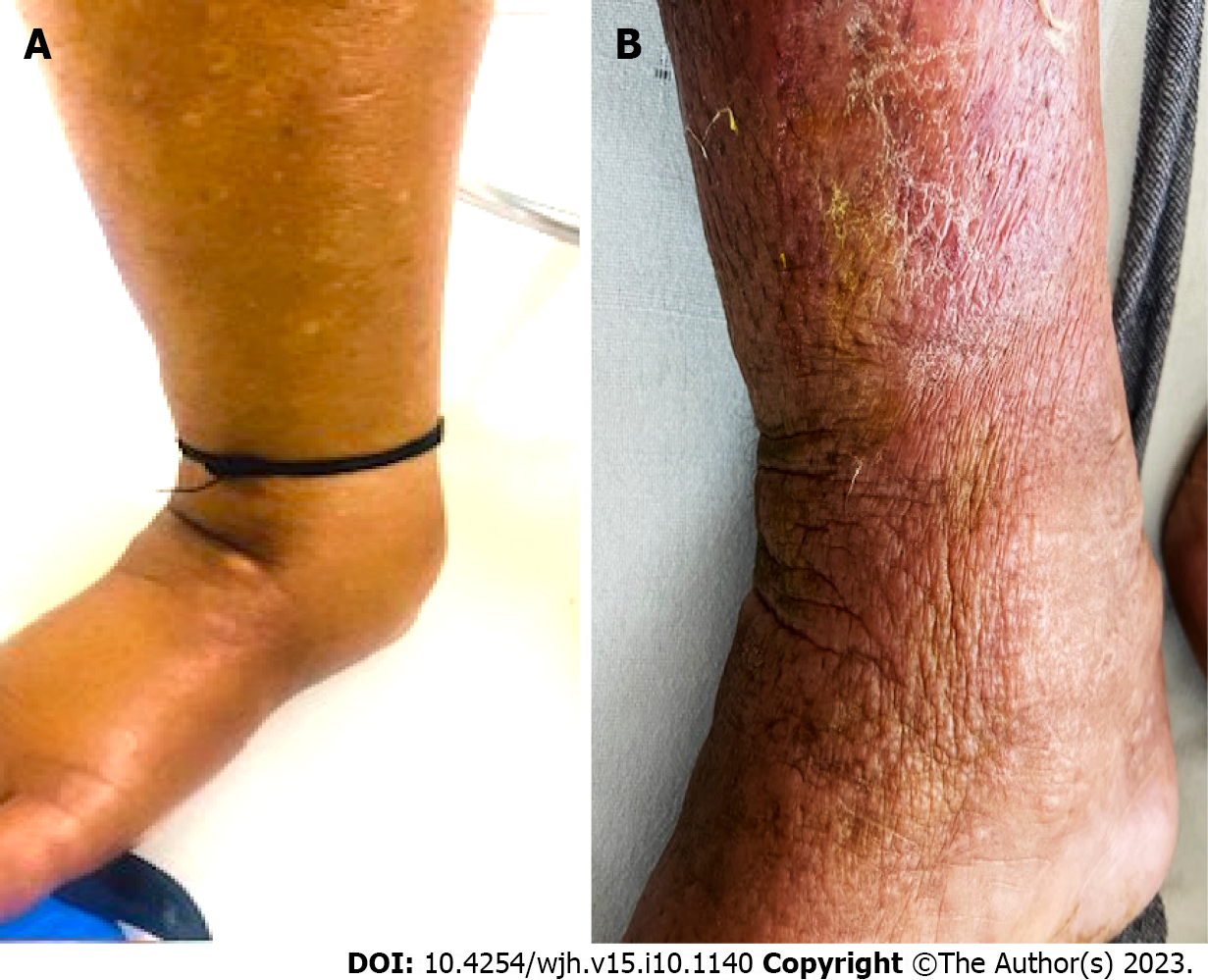Copyright
©The Author(s) 2023.
World J Hepatol. Oct 27, 2023; 15(10): 1140-1152
Published online Oct 27, 2023. doi: 10.4254/wjh.v15.i10.1140
Published online Oct 27, 2023. doi: 10.4254/wjh.v15.i10.1140
Figure 2 Representative images showing two distinct patterns of peripheral edema among cirrhosis patients with refractory ascites.
A and B: Physical appearance of peripheral edema revealed two distinct patterns. In the majority of patients, edema was pitting type and skin texture was smooth (A), which is a finding consistent with edema due to the hydrostatic-oncotic pressure imbalance. In about one-third of patients, edema was severe, mostly non-pitting type with skin texture showing exaggerated dorsal skin creases, hyperkeratosis, and peau d’orange appearance (B), suggesting lymphedema. Some patients with lymphedema also had evidence of cellulitis.
- Citation: Arya R, Kumar R, Kumar T, Kumar S, Anand U, Priyadarshi RN, Maji T. Prevalence and risk factors of lymphatic dysfunction in cirrhosis patients with refractory ascites: An often unconsidered mechanism. World J Hepatol 2023; 15(10): 1140-1152
- URL: https://www.wjgnet.com/1948-5182/full/v15/i10/1140.htm
- DOI: https://dx.doi.org/10.4254/wjh.v15.i10.1140









